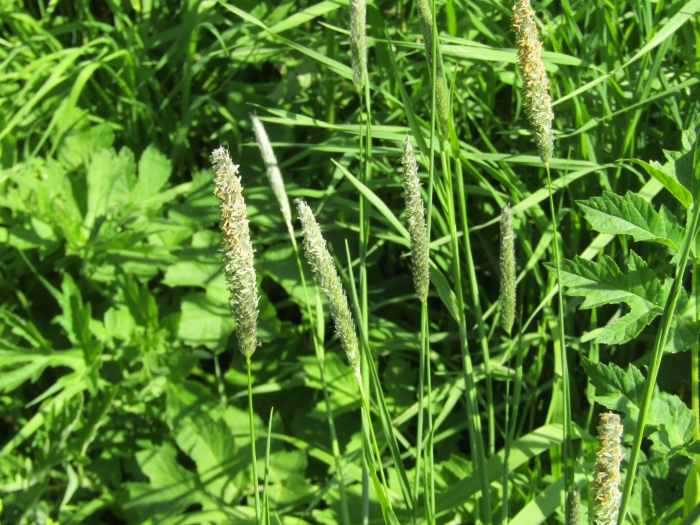Meadow Foxtail
(Alopecurus pratensis)
Meadow Foxtail (Alopecurus pratensis)
/
/

© snaily_naily173
CC BY 4.0
Image By:
© snaily_naily173
Recorded By:
Copyright:
CC BY 4.0
Copyright Notice:
Photo by: © snaily_naily173 | License Type: CC BY 4.0 | License URL: http://creativecommons.org/licenses/by/4.0/ | Uploader: snaily_naily173 | Publisher: iNaturalist |

























Estimated Native Range
Summary
Alopecurus pratensis, commonly known as meadow foxtail, is a perennial grass that is indigenous to temperate regions of Europe and Asia. It is typically found in moist meadows, riverbanks, and other wet grasslands, where it forms dense tufts or swards. This grass prefers neutral to slightly alkaline soils that are moist and fertile. Meadow foxtail can reach up to 43 inches in height, with erect, smooth stems and cylindrical sheaths. Its inflorescence is a dense, bristly spike resembling a fox’s tail, hence the name. The flowers, which appear from April to June, are greenish but can have a purplish tinge, and are among the earliest of the grasses to bloom each year.
Meadow foxtail is valued for its early growth in spring and is often used in pasture mixes for grazing livestock. It is also used for hay production due to its palatability and nutritional value. In ornamental settings, it can provide texture and movement in meadow gardens and naturalistic plantings. While it is not particularly drought-tolerant, it can withstand temporary flooding and prefers full sun to light shade. When cultivated, it requires consistent moisture and can be propagated by seed or division. However, it can become problematic by forming dense swards that suppress other plant species, leading to reduced botanical diversity. Gardeners should be cautious of its potential invasiveness outside its native range and consult local regulations before planting.CC BY-SA 4.0
Meadow foxtail is valued for its early growth in spring and is often used in pasture mixes for grazing livestock. It is also used for hay production due to its palatability and nutritional value. In ornamental settings, it can provide texture and movement in meadow gardens and naturalistic plantings. While it is not particularly drought-tolerant, it can withstand temporary flooding and prefers full sun to light shade. When cultivated, it requires consistent moisture and can be propagated by seed or division. However, it can become problematic by forming dense swards that suppress other plant species, leading to reduced botanical diversity. Gardeners should be cautious of its potential invasiveness outside its native range and consult local regulations before planting.CC BY-SA 4.0
Plant Description
- Plant Type: Grass
- Height: 1.5-2.5 feet
- Width: 1-2 feet
- Growth Rate: Moderate, Rapid
- Flower Color: N/A
- Flowering Season: Spring, Summer
- Leaf Retention: Deciduous
Growth Requirements
- Sun: Full Sun, Part Shade
- Water: Medium, High
- Drainage: Medium, Slow
Common Uses
Erosion Control, Low Maintenance
Natural Habitat
Moist meadows, riverbanks, and wet grasslands in temperate regions of Europe and Asia
Other Names
Common Names: Common Foxtail, Field Meadow Foxtail
Scientific Names: , Alopecurus pratensis, Alopecurus alpestris, Alopecurus alpestris, Alopecurus alpinus f. songaricus, Alopecurus alpinus subsp. songaricus, Alopecurus alpinus subsp. songaricus, Alopecurus alpinus subsp. ventricosus, Alopecurus alpinus var. songaricus, Alopecurus caudicans
GBIF Accepted Name: